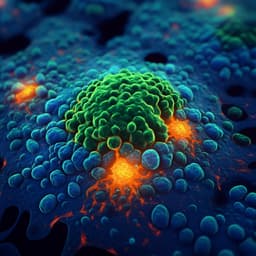
Chemistry
Thymoquinone as an electron transfer mediator to convert Type II photosensitizers to Type I photosensitizers
J. Zhuang, G. Qi, et al.
Discover how Jiahao Zhuang and colleagues have developed a groundbreaking method to transform Type II photosensitizers into Type I photosensitizers using thymoquinone, enhancing ROS generation and achieving impressive bactericidal activity against *S. aureus*, even in low-oxygen environments.
Playback language: English
Related Publications
Explore these studies to deepen your understanding of the subject.







